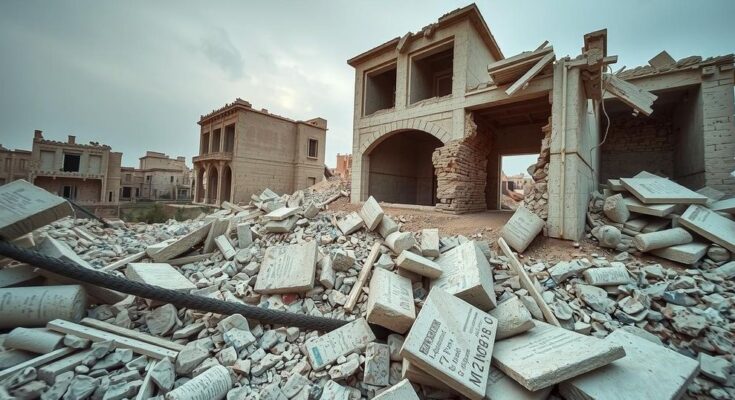The rapid downfall of Bashar al-Assad’s regime has prompted significant shifts in Syria, led by Hayat Tahrir al-Sham’s advance. The political future remains uncertain, with potential for either stability or chaos as various powers reconsider their strategies. While the Syrian citizenry expresses hope for change, the challenges of rebuilding and reconciling a fragmented society loom large.
The rapid demise of the Assad regime took many observers by surprise, notably the Russians and Iranians, who had supported it for years. However, they too were unprepared for the swift advance of Hayat Tahrir al-Sham (HTS), which swiftly captured Aleppo and then made its way to Damascus as Bashar al-Assad sought refuge in Moscow. The political landscape of Syria now stands at a crucial crossroads, with significant implications for its future after decades of authoritarian rule.
The unpredictable nature of the recent events raises numerous questions about Syria’s trajectory. HTS has called for a national dialogue devoid of foreign influence, suggesting a need for stability through a functioning government. Collaboration from Assad’s prime minister indicates a potential path towards unity that could prevent the kind of chaotic power vacuum witnessed in Iraq post-2003. Such a void might otherwise result in rampant violence among factions vying for dominance.
Nevertheless, the ramifications of this shift extend beyond Syria’s borders. Russia and Iran emerge as significant losers in this geopolitical equation, while the outcomes for Turkey and Israel are complicated. Both nations perceive opportunities to enhance their military aims in Syria, yet face increased risks owing to instability. An excessively fragmented Syria could unnerve their borders and invite complexities concerning territorial integrity, especially regarding the Kurdish regions.
The outpouring of joy from the Syrian populace, both domestically and in diaspora, indicates a collective sense of triumph. The road to dismantling the oppressive regime, fostering reconciliation among diverse groups, and rebuilding the nation is undoubtedly arduous. It remains imperative to hope that the Syrian people will be afforded the opportunity and agency to steer their nation towards a more promising future.
The context surrounding Syria is marked by a prolonged civil war and oppressive governance under Bashar al-Assad. Amid international involvement, various factions, including HTS, have emerged, compelling a reconsideration of power dynamics within the country. Recent events signal a significant change in the balance of power, with implications not only for Syria’s internal stability but also for regional security among neighboring nations. The collapse of the Assad regime presents both challenges and opportunities. Significant political repositioning appears imminent, as stakeholders recalibrate their actions in response to developments on the ground. Observations of previous occurrences in Iraq further accentuate the potential pitfalls that may arise from a fragmented power structure. The interactions of foreign powers with local factions will also be critical in shaping Syria’s trajectory.
In summary, the fall of the Assad regime has initiated a complex and unpredictable phase in Syrian history, characterized by both potential for renewal and challenges of governance. Observers must recognize the need for a collaborative approach among diverse groups to foster stability and achievement of a unified state. The stakes for not only Syria but also the broader Middle East require careful attention from international stakeholders, as the outcomes will significantly influence future regional dynamics.
Original Source: www.ekathimerini.com




